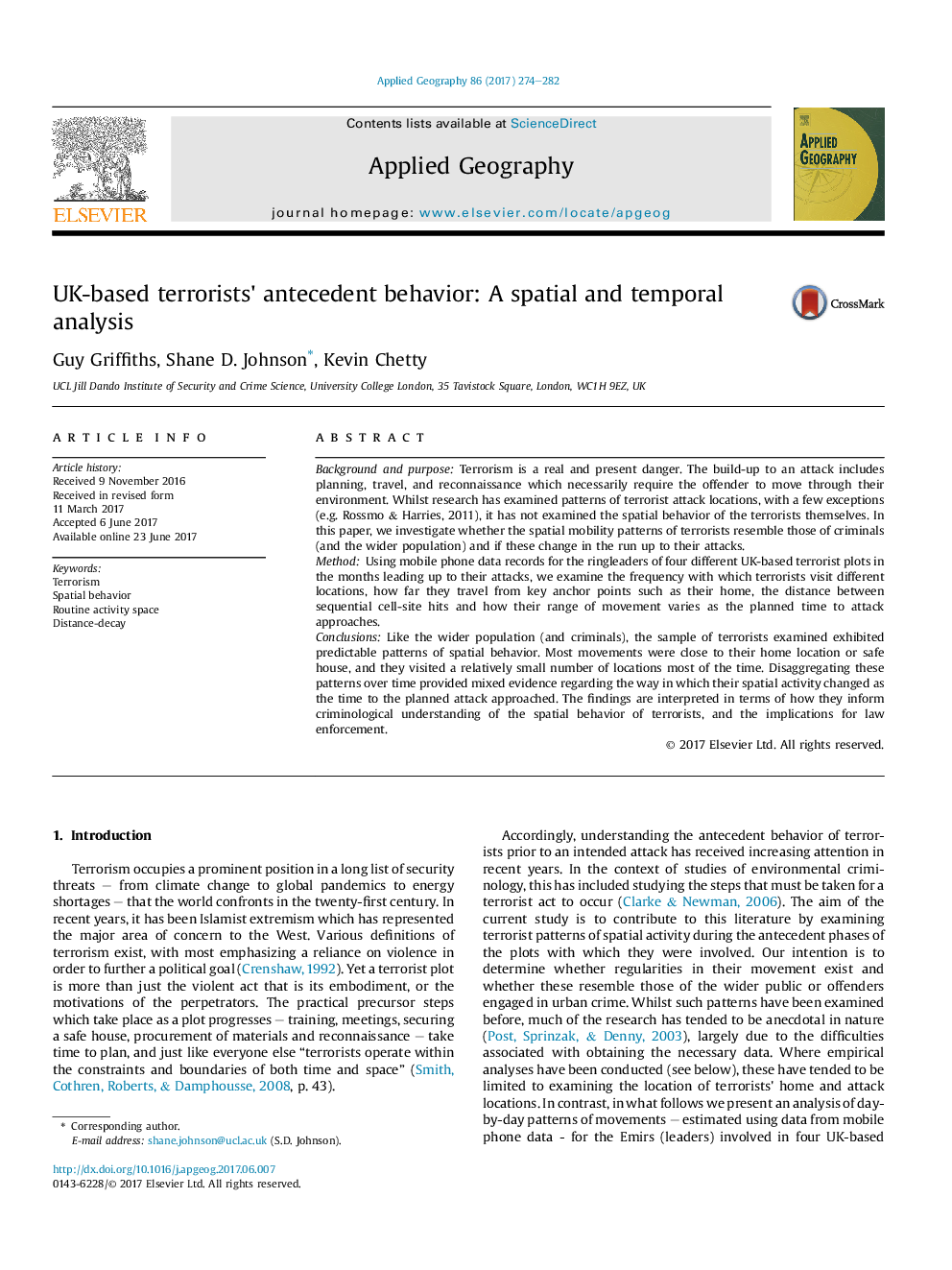| کد مقاله | کد نشریه | سال انتشار | مقاله انگلیسی | نسخه تمام متن |
|---|---|---|---|---|
| 6458343 | 1421031 | 2017 | 9 صفحه PDF | دانلود رایگان |
- Mobile phone data are analyzed for the ringleaders of four UK-based terrorist plots to examine their spatial activity.
- Like the wider population, the sample of terrorists examined exhibited predictable patterns of spatial behavior.
- Most activity was close to their home or safe house, and they visited relatively few locations most of the time.
- There was mixed evidence about how their spatial activity changed as the time to the planned attack approached.
Background and purposeTerrorism is a real and present danger. The build-up to an attack includes planning, travel, and reconnaissance which necessarily require the offender to move through their environment. Whilst research has examined patterns of terrorist attack locations, with a few exceptions (e.g. Rossmo & Harries, 2011), it has not examined the spatial behavior of the terrorists themselves. In this paper, we investigate whether the spatial mobility patterns of terrorists resemble those of criminals (and the wider population) and if these change in the run up to their attacks.MethodUsing mobile phone data records for the ringleaders of four different UK-based terrorist plots in the months leading up to their attacks, we examine the frequency with which terrorists visit different locations, how far they travel from key anchor points such as their home, the distance between sequential cell-site hits and how their range of movement varies as the planned time to attack approaches.ConclusionsLike the wider population (and criminals), the sample of terrorists examined exhibited predictable patterns of spatial behavior. Most movements were close to their home location or safe house, and they visited a relatively small number of locations most of the time. Disaggregating these patterns over time provided mixed evidence regarding the way in which their spatial activity changed as the time to the planned attack approached. The findings are interpreted in terms of how they inform criminological understanding of the spatial behavior of terrorists, and the implications for law enforcement.
Journal: Applied Geography - Volume 86, September 2017, Pages 274-282
